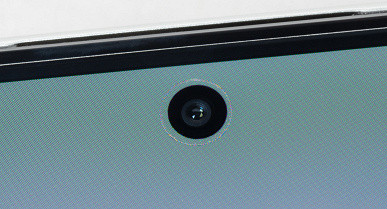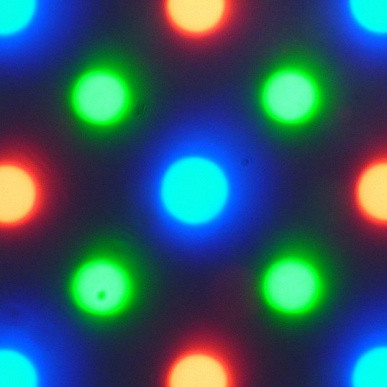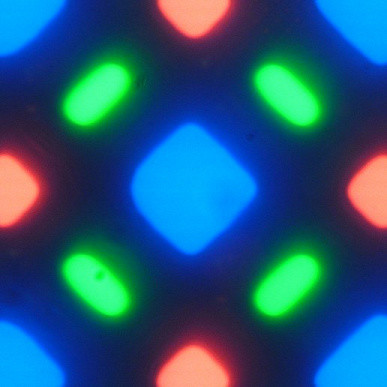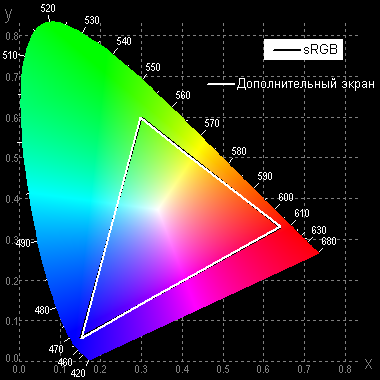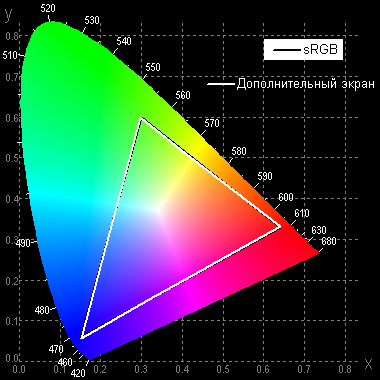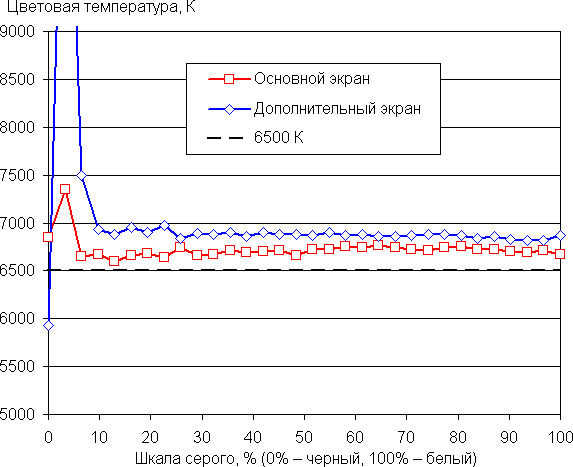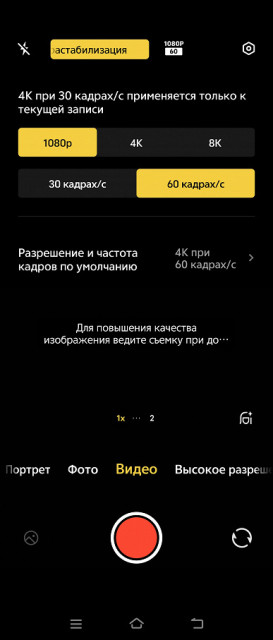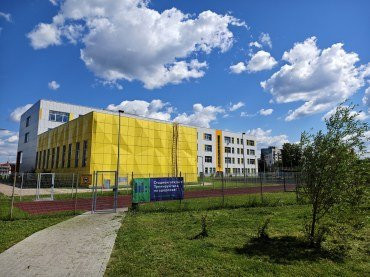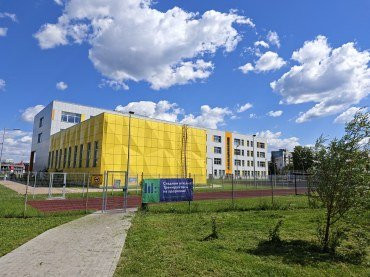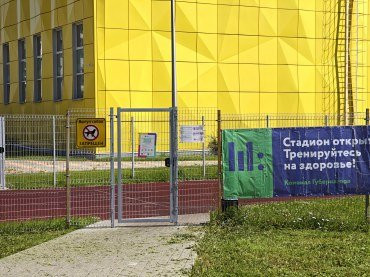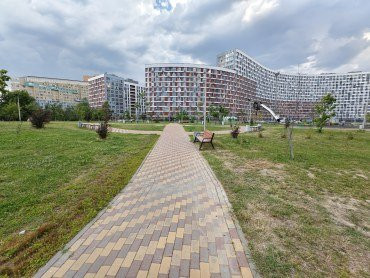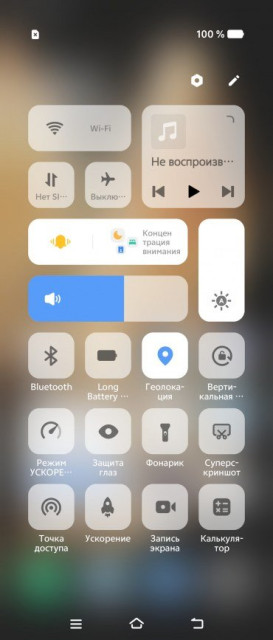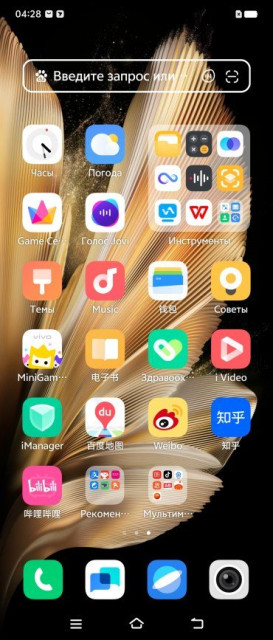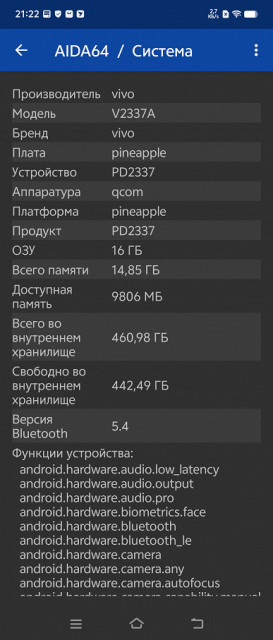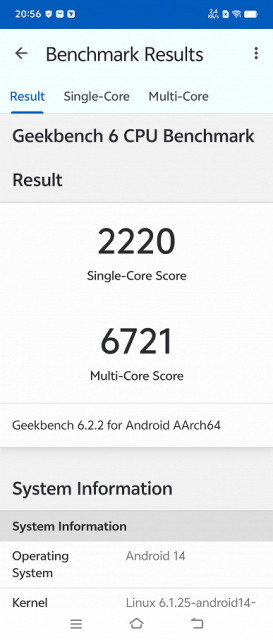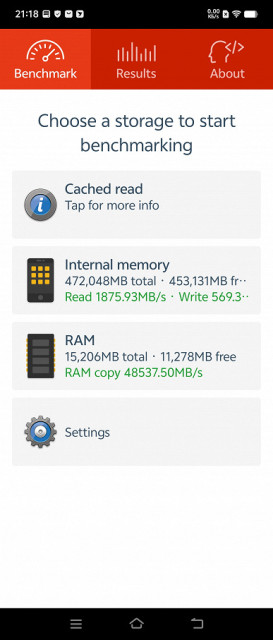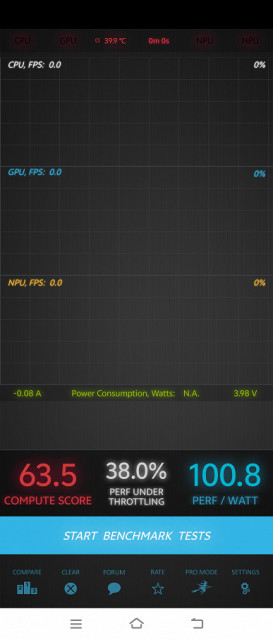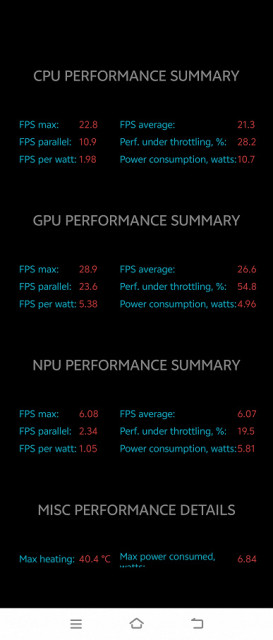Vivo X Fold3 Pro is a new flagship foldable smartphone built on the advanced Snapdragon 8 Gen3 chip. It features top-notch Zeiss cameras and has a very thin body with a 5700 mAh battery, which is impressive for a device of this type.

Key Features of Vivo X Fold3 Pro (Model V2337A)
- SoC Qualcomm SM8650-AB Snapdragon 8 Gen3, 8 processor cores (1×Cortex-X4 @3.3 GHz + 3×Cortex-A720 @3.2 GHz + 2×Cortex-A720 @3.0 GHz + 2×Cortex-A520 @2.3 GHz)
- GPU Adreno 750
- OS Android 14, Funtouch 14
- Main (internal) touchscreen AMOLED, 8.03″, 2200×2480, 413 ppi, 120 Hz
- External touchscreen AMOLED, 6.53″, 1172×2748, 120 Hz
- RAM 12/16 GB, flash memory 256/512/1024 GB
- Supports microSD no
- Support Nano-SIM (2 pcs.)
- Networks 2G GSM, 3G WCDMA, 4G LTE, 5G
- GPS/A-GPS, GLONASS, Galileo, BDS, QZSS
- Wi-Fi 6e/7
- Bluetooth 5.4, A2DP, LE, aptX HD, aptX Adaptive, aptX Lossless
- NFC
- USB 3.2 Gen2 Type-C, USB OTG, Display Port 1.2
- no 3.5 mm audio output for headphones
- Cameras 50 MP + 50 MP (wide-angle) + 64 MP (optical zoom 3×), video 8K@30 fps, 4K@60 fps
- Front cameras 32 MP + 32 MP
- Proximity and light sensors, magnetic field, accelerometer, gyroscope, barometer
- Fingerprint scanner (under the screen, ultrasonic)
- Battery 5700 mAh, charging 100 W, wireless charging 50 W
- Dimensions 160×142×5.2 mm unfolded and 160×73×11.2 mm folded
- Weight 236 g
Appearance and ease of use
Vivo X Fold3 Pro impresses with its dimensions. Despite the folding form factor, which usually implies a thicker case, this smartphone is almost no different from regular candy bars in terms of linear dimensions and thickness when folded. In addition, it is lighter than most modern folding phones and comparable in weight to regular candy bars.

When unfolded, the Vivo X Fold3 Pro looks sleek and neat, an almost square mini-tablet that is only 5.2mm thick. When folded, it is 11.2mm thick. Despite its thinness, Vivo has managed to integrate a 5,700mAh battery, which is a significant achievement for a foldable device.

Vivo X Fold3 Pro is designed in a book-like form factor, where the flaps of the case open like the pages of a book. Although there are already many models in this form factor on the market, this smartphone stands out for its thinness and lightness, which makes it convenient to carry in your pocket without discomfort.

The Vivo X Fold3 Pro hinge securely holds the halves in intermediate positions, allowing the device to be used, for example, as a camera without a tripod. Some built-in apps, including the camera, are adapted to work in a semi-folded state, dividing the interface into two screens. Vivo claims that the hinge is made of carbon fiber, which provides a combination of lightness and strength.
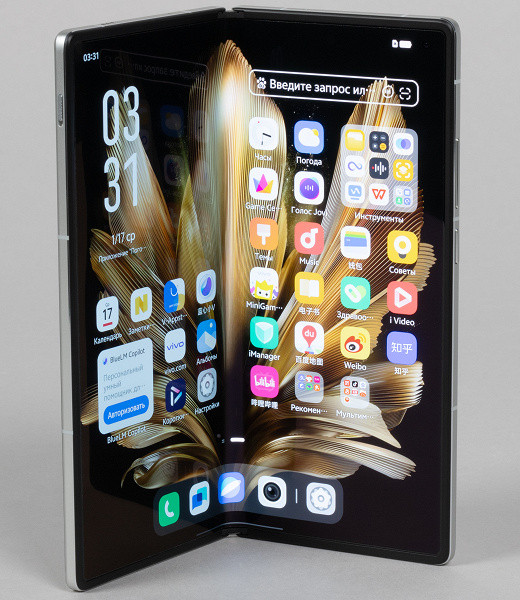
The Vivo X Fold3 Pro hinge securely holds the halves in intermediate positions, allowing the device to be used, for example, as a camera without a tripod. Some built-in apps, including the camera, are adapted to work in a semi-folded state, dividing the interface into two screens. Vivo claims that the hinge is made of carbon fiber, which provides a combination of lightness and strength.

When folded, there is no visible gap between the halves. There is a rim around the perimeter of the screen, which prevents the screens from touching each other and wearing out when closed.

The materials used are of a high standard. The massive side frame is made of metal. Although the side edges are flat, they have small chamfers, creating a recess that is convenient to grasp with your fingers when opening the sashes.

The outside of the device is protected by glass: matte on the back and durable anti-glare glass Schott Xensation on the front. The glass has slightly beveled edges, and the display is made in an elongated aspect ratio of 21:9. This is slightly different from the usual 20:9, the screen is narrower, but this aspect ratio is typical for most modern folding smartphones.
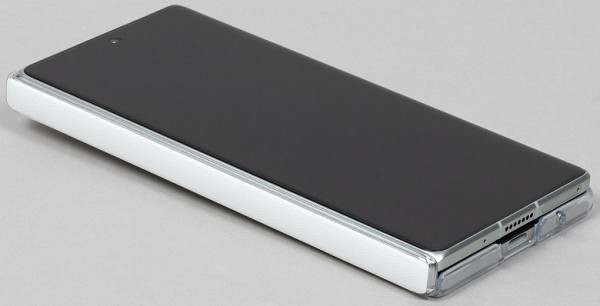
The inner screen is covered with ultra-thin flexible glass (UTG). The flexible screen coating creates a small fold at the junction of the halves, which is noticeable to the touch, but it does not cause discomfort when working with the screen.
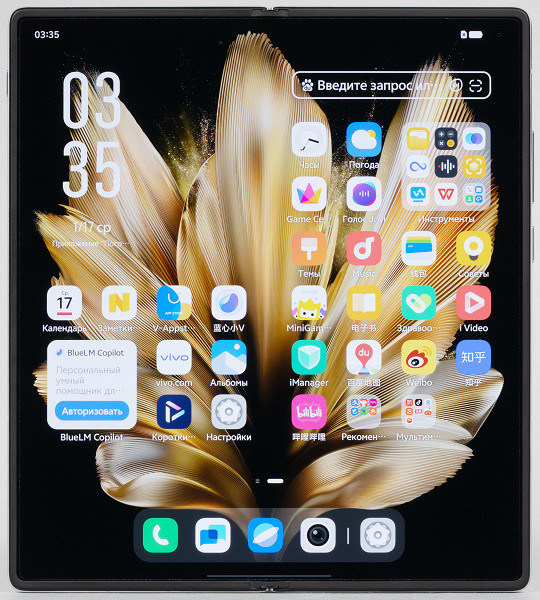
The fingerprint scanners in this device are truly impressive. Firstly, there are two of them – one under each screen. Secondly, both scanners are ultrasonic, which makes them among the most advanced. They work quickly and accurately, recognizing even wet fingers.
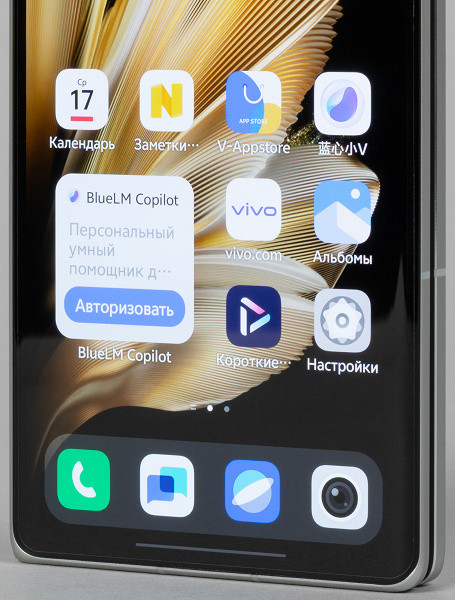
The card tray can accommodate two Nano-SIM cards without the ability to install memory cards.

Both screens also have selfie cameras with the same parameters (32 MP, f/2.4). Moreover, in the case of the main screen, the camera is cut into the corner, where it interferes less.
Unfortunately, there is also a bulky black block with cameras, which takes up almost the entire width of the case. This is a common problem for BBK brand devices. The protruding part of the camera leads to the smartphone shaking a little when using the screen if it is lying on a flat surface.
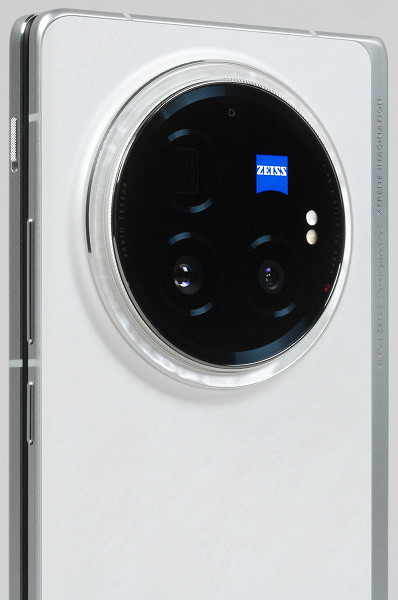
On one of the side edges is a two-position slider for turning off the sound signals — this is a very convenient feature. However, a three-position switch would be even more useful. The hardware buttons are thin, but conveniently located on one side.
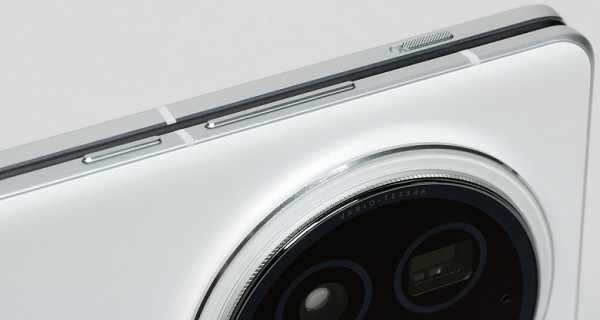
On the top and bottom ends of both halves of the case there are three microphones, stereo speakers, an IR emitter, a USB Type-C connector and a memory card slot. However, there is no 3.5 mm audio output for wired headphones, which is due to the thickness limitations of the device.

Vivo X Fold3 Pro is available in black and white. The body has IPX8 water protection, which allows the device to be completely submerged in water up to 1.5 meters deep for up to 30 minutes.

Screen
The Vivo X Fold3 Pro smartphone features an 8.03-inch AMOLED (flexible OLED) main display with a resolution of 2200 x 2480 pixels (413 ppi). It supports a 120Hz refresh rate, as well as HDR10+ and Dolby Vision.
The outer AMOLED display has a diagonal of 6.53 inches and a resolution of 1172 x 2748 pixels (21:9 ratio). It also supports a 120Hz refresh rate, HDR10+ and Dolby Vision.
The front surface of the main folding screen is made of plastic. Despite this, it is quite resistant to scratches; it was not possible to scratch it with a fingernail. The screen has a glossy and slightly uneven surface, with a pronounced crease at the bend, but this has virtually no effect on the image when viewed at an angle. The screen has a protective film, which is part of the display and cannot be removed.
The outer screen is made of glass with a mirror-smooth surface, with a rounded edge and is also resistant to scratches. The anti-glare properties of the main screen are better due to the film, while the outer screen has slightly better anti-glare properties compared to the Nexus 7 (2013). Doubling of reflected objects is minimal, which indicates the absence of an air gap between the layers of the screen, providing better image quality in bright light.
The oleophobic coating on the outer screen is effective, and the film on the main screen also has such properties, which makes it easier to remove fingerprints.
When displaying a white field, the maximum screen brightness is 500/480 cd/m² (main/external) under normal conditions, and can reach 1750/1500 cd/m² in bright light. Brightness increases with a smaller white area, which improves readability in the sun. The minimum brightness is 2/2 cd/m², which allows you to use the screen in complete darkness. Automatic brightness control works according to the light sensors under the screens. In complete darkness, auto-brightness reduces the brightness to 4/4 cd/m², in the office to 100/95 cd/m², and under direct sunlight to 1750/1500 cd/m². The auto-brightness function works adequately, allowing you to adjust the brightness to individual requirements. At high and medium brightness levels, significant modulation is observed with a frequency of about 480/120 Hz.
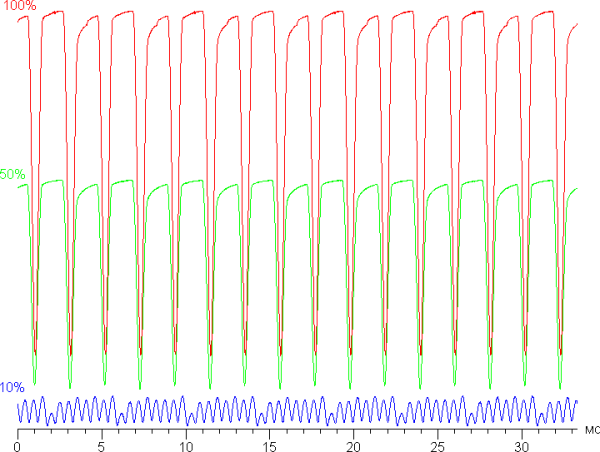
Main screen
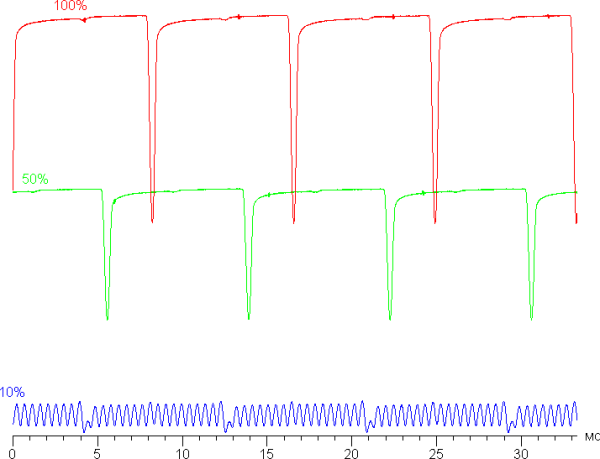
Additional screen
At high and medium brightness, the screen modulation duty cycle is low, which eliminates visible flickering. With a significant decrease in brightness, modulation with a high frequency (1.92 / 2.16 kHz) appears, but visible flickering remains absent.
A mode with a refresh rate of up to 120 Hz is available in the screen settings.

In 120Hz mode, the smoothness of scrolling menus and lists is noticeably improved, but the modulation pattern remains the same. With a static image, the screen refresh rate can drop to 1Hz, depending on the conditions.
Both screens use a Super AMOLED matrix — an active matrix on organic light-emitting diodes. The image is formed using subpixels of three colors: red ®, green (G) and blue (B), with red and blue subpixels twice as small, which can be designated as RGBG. This is confirmed by a microphotograph of the screen.
The fragment above shows that there are 4 green subpixels, 2 red (4 halves) and 2 blue (1 whole and 4 quarters) on the screen. These fragments can be repeated to cover the entire screen without gaps or overlaps. Such a matrix from Samsung is designated as PenTile RGBG. The screen resolution is determined by the number of green subpixels, while for red and blue it will be lower. Although there are small unevenness of contrast borders and other artifacts, their impact on image quality is minimal due to the high resolution.
The screens have excellent viewing angles. The brightness when tilting the screen noticeably decreases compared to the Nexus 7, but in the case of this smartphone, the drop in brightness is much less pronounced. Therefore, even with the same formal brightness, the smartphone screens look brighter compared to LCD screens. However, when deviating at large angles, the white color acquires a slight blue-green tint, especially on the main screen. Black remains deep and rich at any viewing angle, making the contrast parameter irrelevant. For illustration purposes, the photos are shown in which the same images are displayed on the screens of a smartphone and a Nexus 7 (the lower part of the image is the Nexus 7, the upper part is the smartphone), while the brightness of the screens is set to approximately 200 cd/m², and the color balance on the camera is set to 6500 K.

Main screen
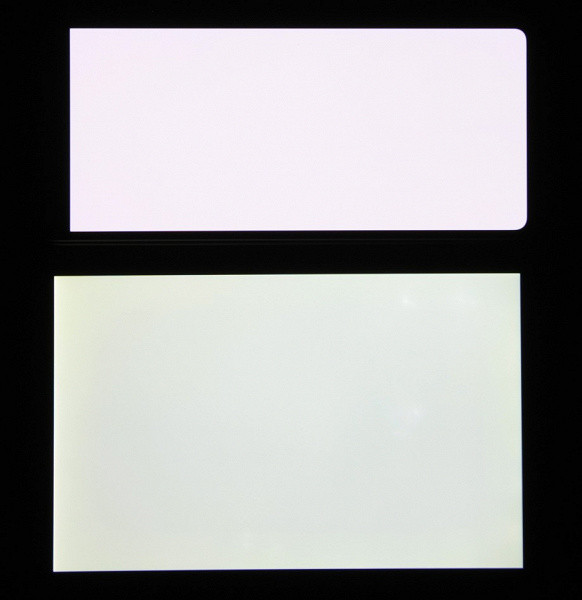
Additional screen
Note the good uniformity of brightness and color tone of the white field.
And the test image (Professional profile):

Main screen
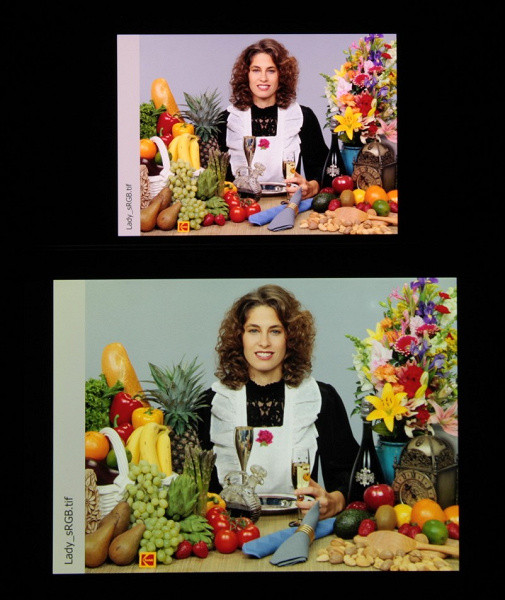
Additional screen
The color rendering on the screen is good, the colors are saturated, and the color balance is slightly different from the Nexus 7 screen. It should be remembered that the photos are not a reliable source for assessing the color rendering and are provided for conditional illustration only. For example, the pronounced reddish tint of white and gray in the screen photos is absent when looking directly, which is confirmed by hardware tests using a spectrophotometer. This is due to the fact that the spectral sensitivity of the camera matrix does not fully coincide with the characteristics of human vision.
The photo was taken after selecting the "Professional" profile in the screen settings; there are three profiles available.
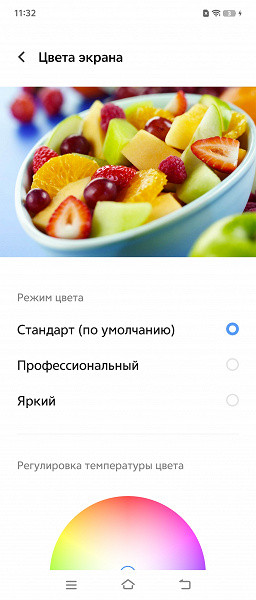
When you select the first one, Standard, which is the default, the colors are oversaturated and unnatural:
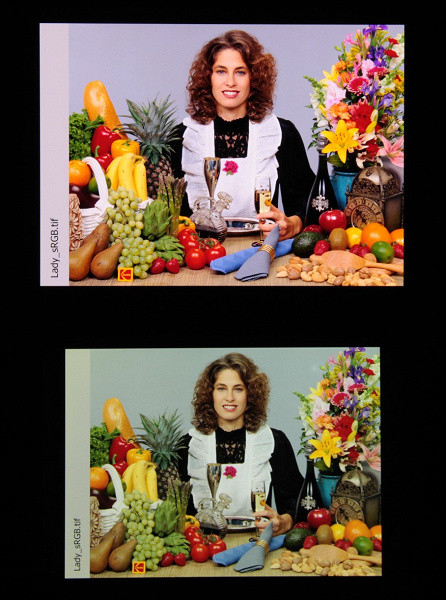
Main screen
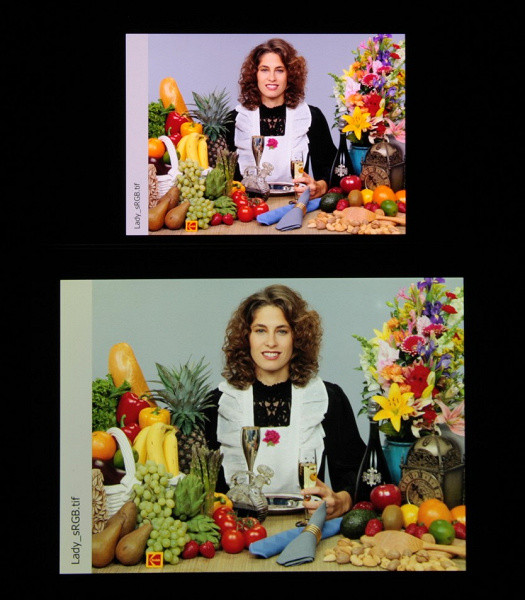
Additional screen
This profile is characterized by a good approximation of the DCI coverage (see below). When choosing the Vivid profile, the color saturation is even higher:
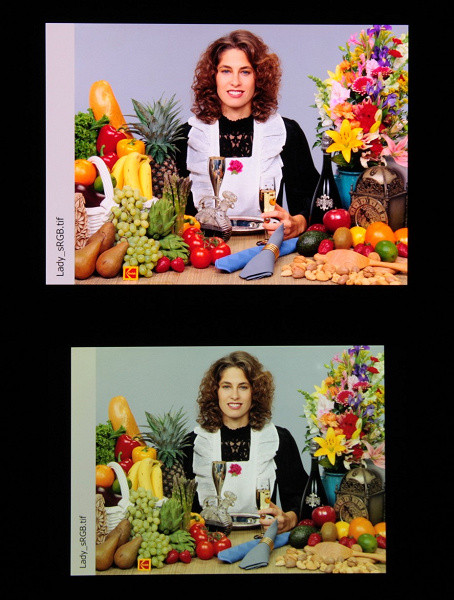
Main screen
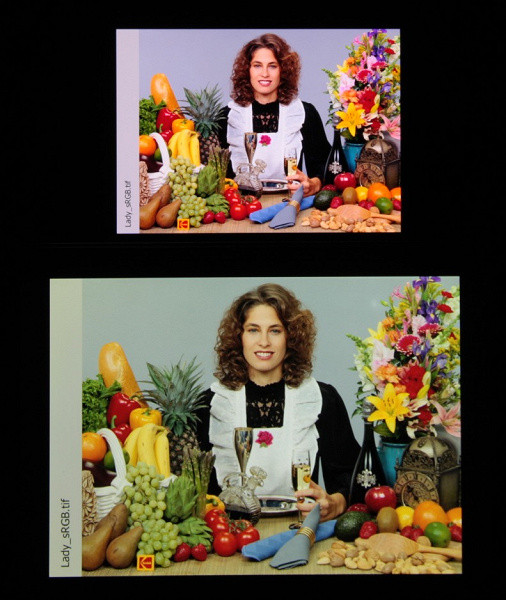
Additional screen
Switching of the matrix elements state occurs almost instantly, however, when switching on, a small step of approximately 17 ms (corresponding to a refresh rate of about 60 Hz) or about 8 ms (at 120 Hz) can be observed. For example, the graph of brightness change during the transition from black to white looks like this for 60 Hz and 120 Hz modes:
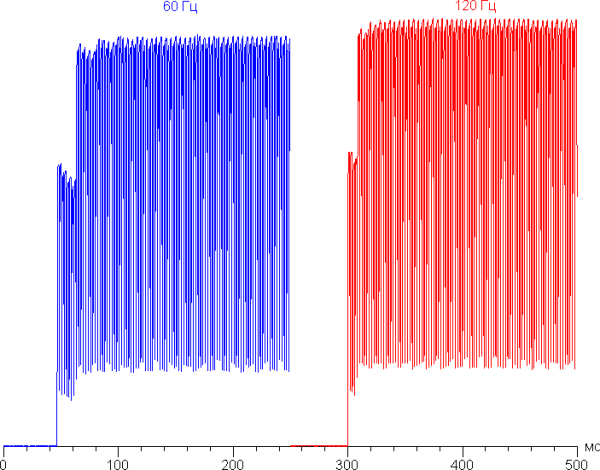
Main screen
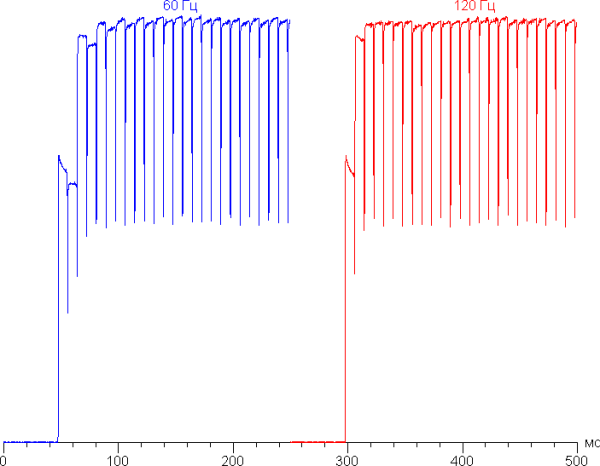
Additional screen
In some conditions, the step at the front of the screen switching on can cause trails that stretch behind moving objects.
Analysis of the gamma curve, constructed using 32 grayscale points, showed that there are no significant distortions in either highlights or shadows. The value of the power approximation function is 2.22 for the main screen and 2.29 for the additional screen, which is slightly higher than the standard value of 2.2. In both cases, the gamma curve is close to a power dependence.
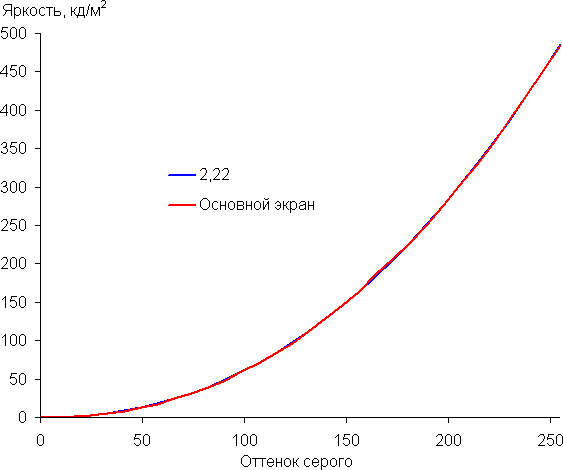
Main screen
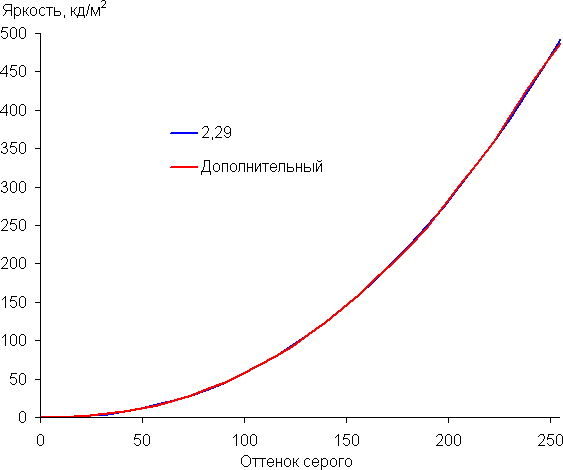
Additional screen
Let us remind you that on OLED screens the brightness of parts of the image changes dynamically depending on the nature of the displayed content, which leads to a slight decrease in brightness for light images. Therefore, the resulting gamma curve may not fully reflect the gamut of a static image, since the measurements were carried out with gray shades displayed on the entire screen.
In the "Bright" profile, the color gamut is very wide.
When you select the Professional profile, the coverage is squeezed to the sRGB boundaries:
The coverage in case of the Standard profile is close to the DCI space:
Without correction (the Bright option), the component spectra (that is, the spectra of pure red, green and blue colors) are very well separated:

Main screen
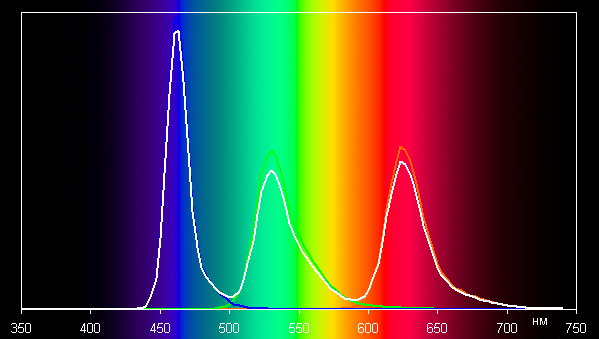
Additional screen
In the case of the Professional profile, the color components are mixed with each other to a significant extent:

Main screen
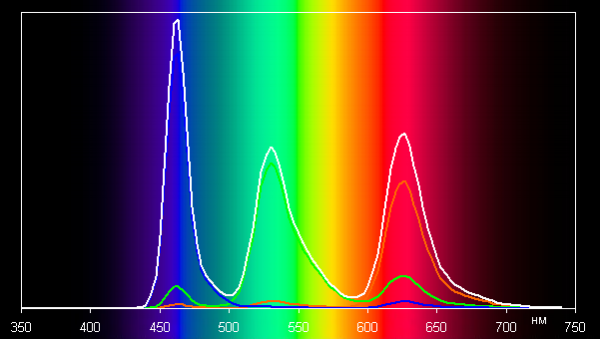
Additional screen
This device has the ability to adjust the color balance by selecting a color temperature profile or adjusting the hue on the color wheel.
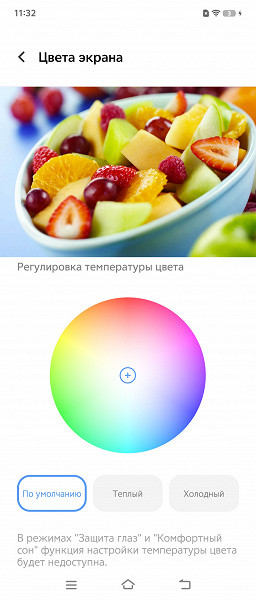
Even without correction, the grayscale balance in the Professional profile remains good, due to the fact that the color temperature is close to the standard 6500 K, and the deviation from the black body spectrum (ΔE) is less than 10 units, which is acceptable for consumer devices. The color temperature and ΔE remain stable across different shades, which has a positive effect on the visual assessment of the color balance.
(The darkest areas of the gray scale can usually be ignored, since the color balance in these areas is less important, and the measurement error at low brightness is quite large.)
In addition, there is an «Eye Protection» setting that allows you to reduce the intensity of blue light:

Bright light can disrupt the circadian rhythm, but this can be corrected by reducing the brightness to a comfortable level. Reducing blue light does not make sense, as it distorts the color balance.
The device supports DisplayPort Alt Mode via USB Type-C, which allows you to output images and sound to external devices. When connected to a Full HD monitor, video is output in 1080p resolution at 60 Hz. Only the mode of duplicating the active smartphone screen is available, without precise display (with black borders).
Let's summarize. Both screens have a high maximum brightness (1750/1500 cd / m²) and excellent anti-glare properties, especially the main, folding screen, which makes using the device in the sun without problems. In complete darkness, the brightness can be reduced to a comfortable level (up to 2 cd / m²). The automatic brightness control mode works adequately. The advantages of the screens include an effective oleophobic coating, no flickering, support for a refresh rate of 120 Hz, a color gamut close to sRGB with the right profile, and a good color balance. OLED screens provide true black and a smaller drop in brightness when viewed at an angle compared to LCD screens. The quality of the screens is very high. Note that the curved edge of the additional screen introduces color distortions and reduces the brightness at this edge, and also increases the likelihood of glare in external lighting. However, the image minimally extends beyond the curved edge, which reduces its negative impact.
Camera
The Vivo X Fold3 Pro smartphone is equipped with three rear cameras with Zeiss optics:
- Main camera: 50 MP, 1 / 1.3 ", f / 1.7, 23 mm, PDAF, laser autofocus, OIS.
- Telephoto camera: 64 MP, 1 / 2.0 ", f / 2.6, 70 mm, PDAF, OIS, 3x optical zoom.
- Wide-angle camera: 50 MP, 1 / 2.76 ", f / 2.0, 119 °, PDAF.
In addition, the device has two front cameras:
- External selfie camera: 32 MP, f / 2.4.
- Internal selfie camera: 32 MP, f / 2.4.
The main camera shoots at 12.5 MP by default with pixel binning, but you can also shoot at full 50 MP. However, the 50 MP photos look worse: they are blurry, whitish, and less contrasty, with visible noise in the shadows and artifacts in the bright sky. It is better to use the standard 12.5 MP mode for better quality photos, and for detailed shots and enlargements, use the zoom camera. Even in the thumbnails, you can see that the processed 12.5 MP photos look much better.
The 12.5 MP photos are bright and saturated, with high detail and excellent dynamic range, which allows you to work out details in the darkest and brightest areas. The color rendition is a little oversaturated, and the contour sharpness is slightly raised, but this looks moderate and appropriate. Sharpness is good across the entire frame, only the corners are a little blurry. In general, the quality of the main camera's shooting is high, although not quite at the level of flagship devices.
Here are additional examples of shooting in automatic mode:
At night, the smartphone copes well with noise and increases contour sharpness, which generally gives the pictures a decent look. Color rendition is impressive, although saturation and brightness are somewhat exaggerated. Processing in night mode turns out to be more aggressive than we would like. Nevertheless, the miniatures look quite impressive.
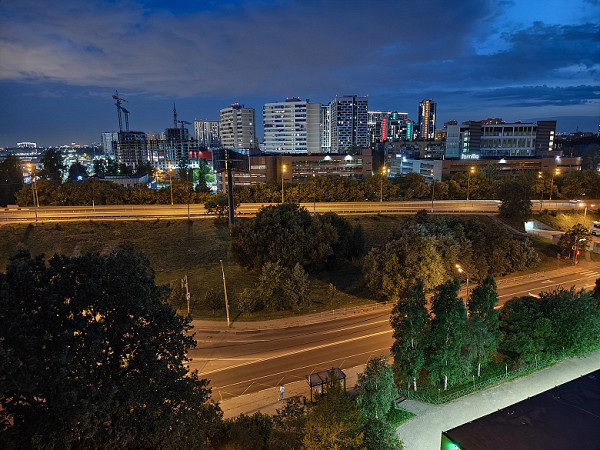
The optical 3x zoom provided by the second camera demonstrates good quality: sharpness, clarity, detail and volume are at a high level. Zoom shots are also taken with pixel merging into a quarter of the sensor resolution. However, a full 64 MP resolution shooting mode is available, which is worth using if high detail is critical. However, in this mode the image looks less “attractive”.
As you might expect, image quality deteriorates when zooming in using digital zoom. However, subjects remain distinguishable even at the maximum digital zoom of 100x.

Digital zoom ≈55×
The wide-angle module produces average photos – better than the worst, but not outstanding either. This camera is inferior to the main one in terms of detail: even in daylight, the center of the image looks only acceptable, and the edges are noticeably blurred. The 50 MP shooting mode is certainly not justified here.
The smartphone supports 8K video recording at 30 frames per second, but in this mode there is noticeable strobing, despite the richness, volume and good clarity of the image. It is recommended to switch to 4K@60 fps shooting, where the image remains clear and detailed, with good smoothness and no strobing or jerking. In general, the quality of video shooting is quite high.
The smartphone is equipped with two selfie cameras: one for the external screen and one for the internal one, both with a resolution of 32 MP. The quality of their shooting is quite mediocre — overexposed photos, smoothed textures and low detail are possible.

Telephone and communications
The Vivo X Fold3 Pro smartphone offers a flagship level of network capabilities: support for 5G, Wi-Fi 7, Bluetooth 5.3 LE and NFC. The USB Type-C port supports USB 3.2 Gen2 high-speed mode and video output. In the Moscow region, the device demonstrates a stable connection in wireless networks, quickly restoring the connection after interruptions.
The dual-band navigation module supports GPS (L1 + L5), GLONASS (G1), BDS (B1I + B1c + B2a), Galileo (E1 + E5a) and QZSS (L1 + L5). Satellites are detected quickly, and the positioning accuracy is excellent.
The interlocutor's voice in the speaker sounds loud and clear, the vibration motor is felt well. The built-in sensors include all the necessary ones, including a gyroscope and a barometer.
Software and multimedia
Vivo X Fold3 Pro runs on Android 14 with Funtouch 14 shell in the global version and OriginOS 4 in the Chinese version. We tested the Chinese model, which has a high-quality translation, installed basic Google services and is quite suitable for use in Europe. The interface is adapted for working in tablet mode, which makes it especially convenient on a large screen. Floating windows allow you to split and resize them, as well as use the picture-in-picture mode. In half-open mode, the camera app changes the interface, allowing you to display the viewfinder on one half of the screen and the gallery on the other.
The smartphone is equipped with stereo speakers that sound clear and very loud. All modern codecs are supported for wireless headphones, including aptX HD, aptX Adaptive and aptX Lossless.
Performance
The Vivo X Fold3 Pro smartphone is equipped with a Qualcomm SM8650-AB Snapdragon 8 Gen3 processor, manufactured using a 4-nm process technology. Depending on the configuration, it can have 12 or 16 GB of LPDDR5X RAM and built-in storage of 256, 512 GB or 1 TB UFS 4.0. A microSD memory card cannot be installed, but external devices can be connected via the USB Type-C port in USB OTG mode.
This flagship platform demonstrates excellent results, scoring almost 1.5 million points in AnTuTu. The graphics adapter supports the Vulkan API, which provides excellent performance in any task. The smartphone easily copes with the smooth operation of the interface, complex virtual entertainment and video shooting in resolutions up to 8K. All games, including Genshin Impact at high graphics settings, work without slowdowns.
Testing in complex tests AnTuTu and GeekBench:
We have collected all the smartphone test results on the latest versions of popular benchmarks in tables for convenience. The tables also include several other devices from different segments, tested on the same latest versions of benchmarks, to provide a visual assessment of the results. Unfortunately, it is impossible to present the results from different versions of benchmarks in one comparison, so many worthy and relevant models that have been tested on older versions of programs remain behind the scenes.
| Vivo X Fold3 Pro (Qualcomm Snapdragon 8 Gen3) | Oppo Find N3 (Qualcomm Snapdragon 8 Gen2) | Honor Magic6 Pro (Qualcomm Snapdragon 8 Gen3) | Samsung Galaxy S24 Ultra (Qualcomm Snapdragon 8 Gen3) | OnePlus Nord 3 5G (Mediatek Dimensity 9000) | |
|---|---|---|---|---|---|
| AnTuTu (v9.x) (bigger is better) | 1486840 | 1250268 | 1205856 / 1544217 | 1806649 | 789188 |
| GeekBench 6 (bigger is better) | 2220/6721 | 1958/5025 | 2139/6582 | 2267/7091 | 1077/3175 |
Testing the graphics subsystem in GFXBenchmark gaming tests:
| Vivo X Fold3 Pro (Qualcomm Snapdragon 8 Gen3) | Oppo Find N3 (Qualcomm Snapdragon 8 Gen2) | Honor Magic6 Pro (Qualcomm Snapdragon 8 Gen3) | Samsung Galaxy S24 Ultra (Qualcomm Snapdragon 8 Gen3) | OnePlus Nord 3 5G (Mediatek Dimensity 9000) | |
|---|---|---|---|---|---|
| GFXBenchmark Aztec Ruins OpenGL (1080p Offscreen, fps) | 182 | 154 | 195 | 188 | 96 |
| GFXBenchmark Aztec Ruins Vulkan (1080p Offscreen, fps) | 207 | 179 | 225 | 193 | 105 |
| GFXBenchmark Car Chase ES 3.1 (1080p Offscreen, fps) | 141 | 119 | 161 | 120 | 79 |
| GFXBenchmark Manhattan ES 3.1 (1080p Offscreen, fps) | 197 | 148 | 189 | 204 | 151 |
| GFXBenchmark T-Rex (1080p Offscreen, fps) | 356 | 341 | 267 | 324 | 293 |
Testing in browser cross-platform tests:
| Vivo X Fold3 Pro (Qualcomm Snapdragon 8 Gen3) | Oppo Find N3 (Qualcomm Snapdragon 8 Gen2) | Honor Magic6 Pro (Qualcomm Snapdragon 8 Gen3) | Samsung Galaxy S24 Ultra (Qualcomm Snapdragon 8 Gen3) | OnePlus Nord 3 5G (Mediatek Dimensity 9000) | |
|---|---|---|---|---|---|
| Google Octane 2 (bigger is better) | 23478 | 39696 | 21955 | 70812 | 29390 |
| JetStream (bigger is better) | 70 | 34 | 105 | 180 | 76 |
Memory speed test results:
Heat
We test for performance degradation when heating using the Burnout Benchmark program, which allows you to load the CPU, GPU and NPU:
| Load on | Heating performance, as a percentage of maximum |
|---|---|
| CPU | 28% |
| GPU | 55% |
| NPU | 20% |
Battery life
The Vivo X Fold3 Pro smartphone is equipped with a silicon-carbon (Si/C) battery with an impressive capacity of 5700 mAh, which is large even by modern standards. Battery life was tested on the main large screen, which is its main function. Although this is a decent result for foldable smartphones, it is still inferior to monoblocks in terms of battery life. When using an external display, the results were better: watching the same video provided significantly more battery life.
Testing was carried out without enabling power saving functions, although such options are available in the device. Test conditions: minimum comfortable brightness is set (about 100 cd/m²). Tests included: continuous reading in the Moon+ Reader program with a light theme, continuous viewing of HD video (720p) over a home Wi-Fi network, and the Injustice 2 game with automatic graphics settings.
| Battery capacity | Reading mode | Video mode | 3D gaming mode | |
|---|---|---|---|---|
| Vivo X Fold3 Pro | 5700 mAh | 19:00 | 17:00 | 6:00 a.m. |
| Oppo Find N3 | 4805 mAh | 20:00 | 18:00 | 6:00 a.m. |
| Honor Magic6 Pro | 5600 mAh | 38 h 00 m | 30:00 a.m. | 9:00 a.m. |
| Google Pixel 8 Pro | 5050 mAh | 22:00 | 18:00 | 7:00 a.m. |
| Honor 90 | 5000 mAh | 21:00 | 18:00 | 7:00 a.m. |
| Honor Magic V2 | 5000 mAh | 21:00 | 17:00 | 6:00 a.m. |
| Huawei Mate X3 | 4800 mAh | 14:00 | 10:00 a.m. | 5:00 a.m. |
| Oppo Find N2 | 4520 mAh | 20:00 | 17:00 | 5:00 a.m. |
| Oppo Find N2 Flip | 5000 mAh | 20:30 h. | 19:00 | 8:00 a.m. |
These figures represent the maximum values obtained under “ideal” testing conditions, including no SIM cards installed. Any changes to the usage scenario will likely result in lower results.
The smartphone charges from the included 120W charger, consuming up to 100W, and a full charge takes just over half an hour. Wireless charging is also supported.
Summary
In the international market, the base version of the smartphone with 16 GB of RAM and 512 GB of internal storage costs $ 1,385, while the top version with 16 GB of RAM and 1 TB of storage is priced at $ 1,525.
The price is quite justified for a flagship device, especially for a foldable smartphone. The device does not cause any complaints in terms of technology: it is equipped with excellent cameras, a powerful flagship Qualcomm platform, high-quality OLED screens, very loud and surround sound, good battery life and fast charging. Network modules are also at the level of a flagship, and the memory capacity is close to the maximum to date. Overall, this is one of the best foldable smartphones on the market, if not the best at the moment, although it will take a little effort to buy it online and install the necessary software.


